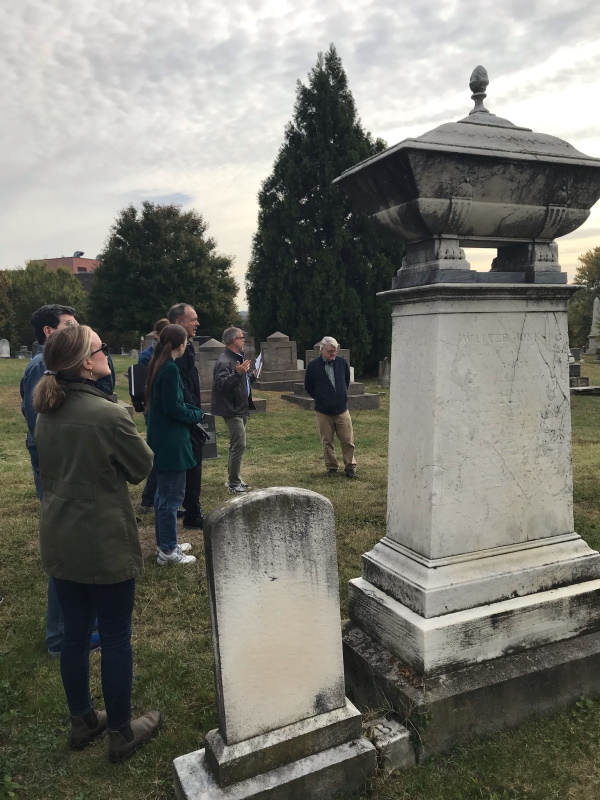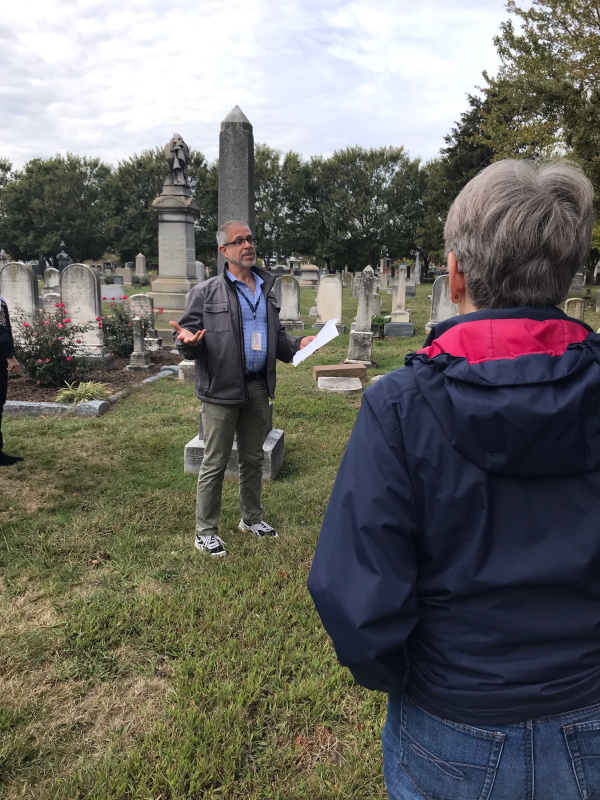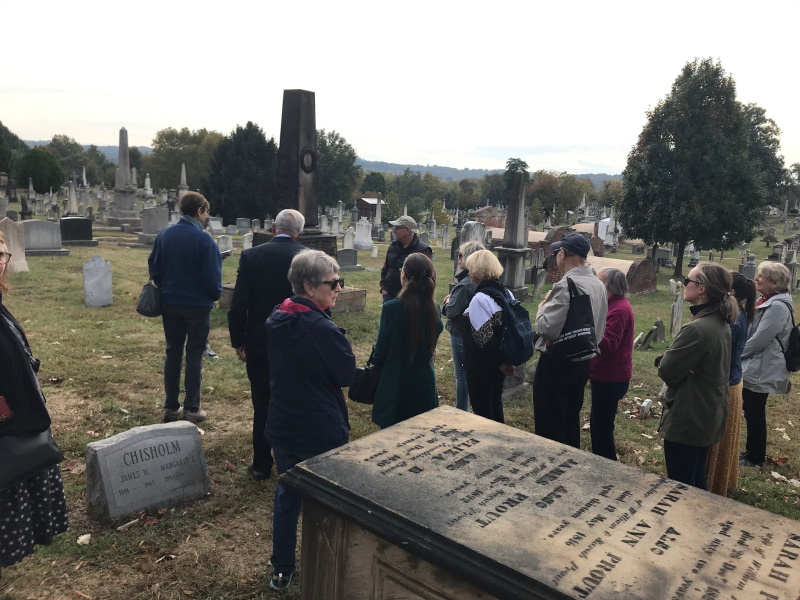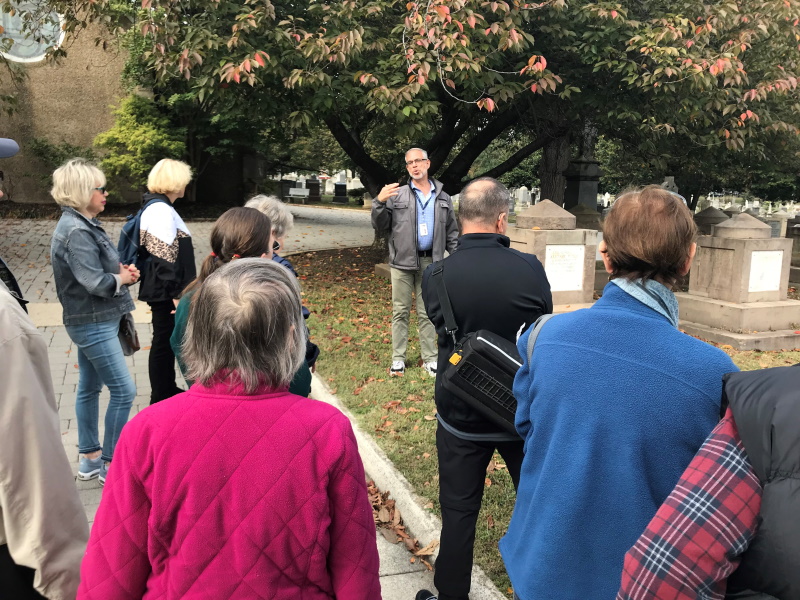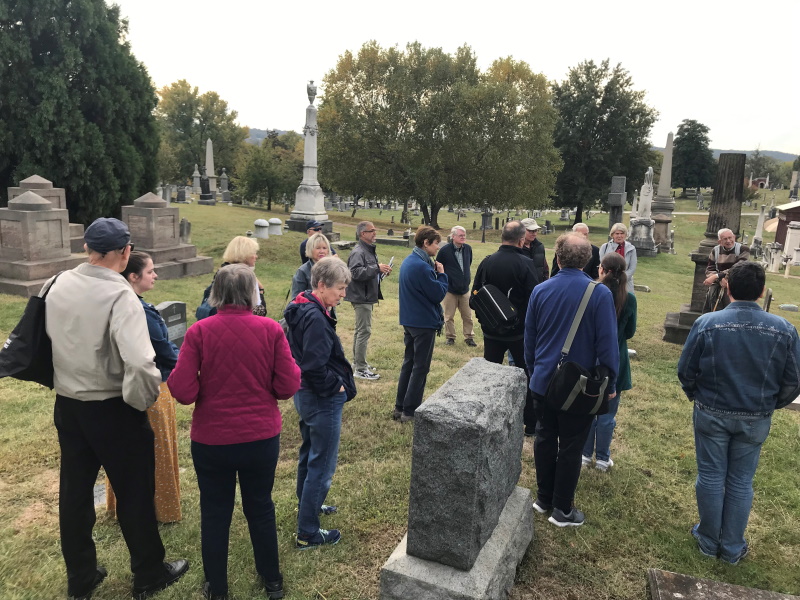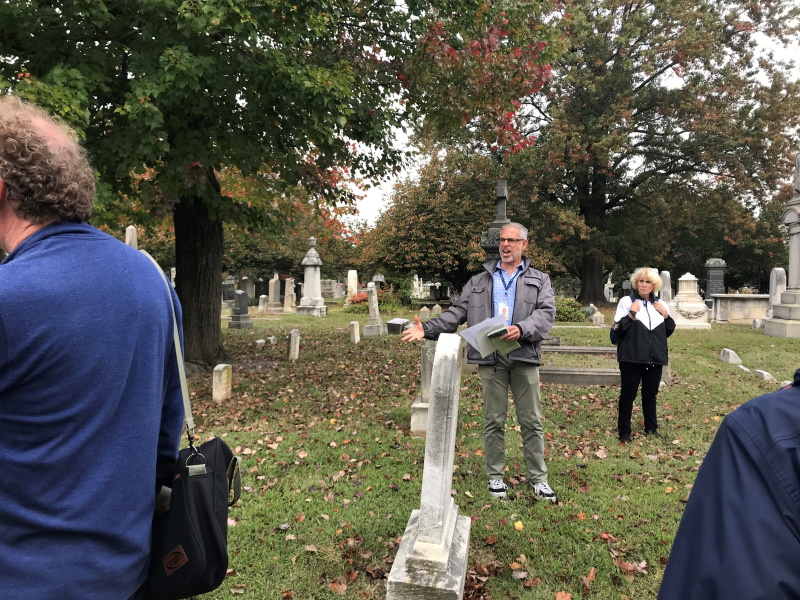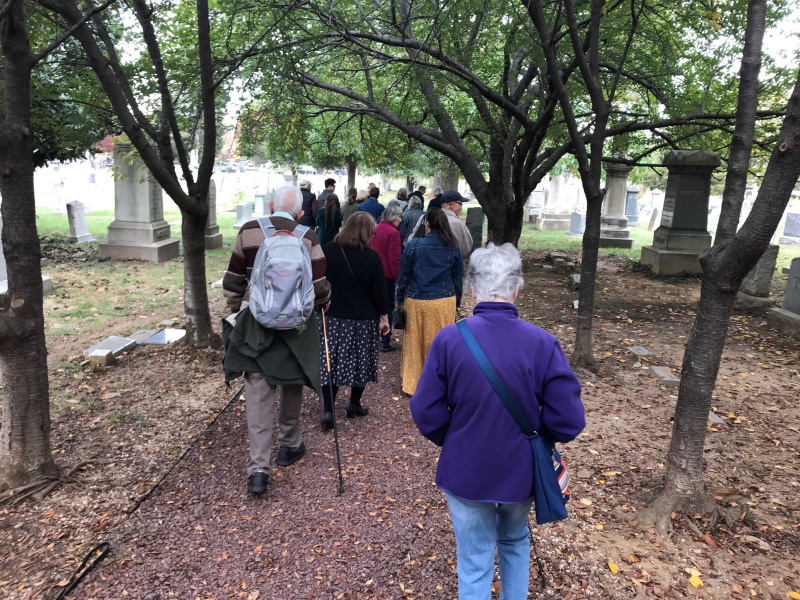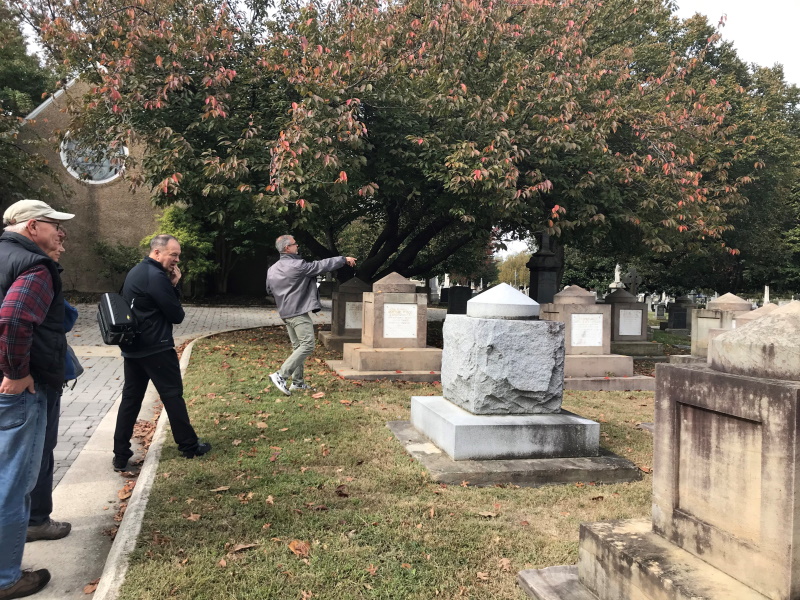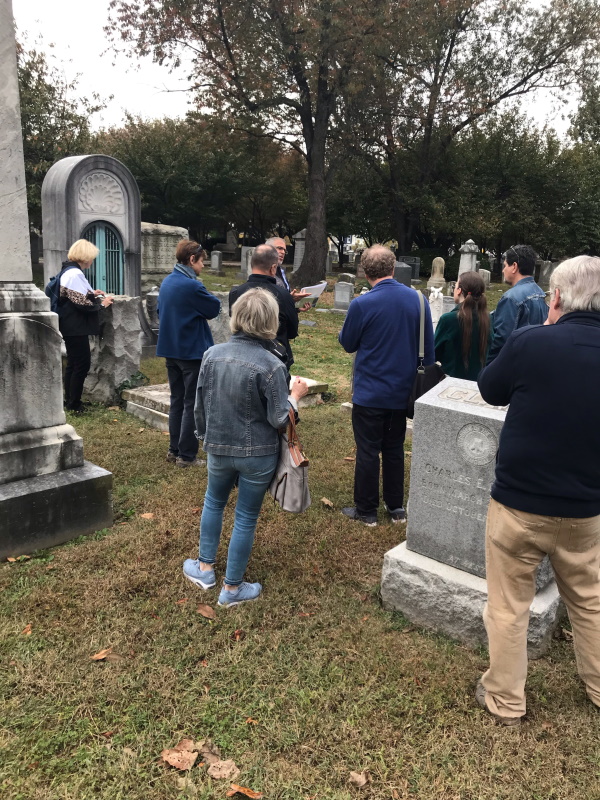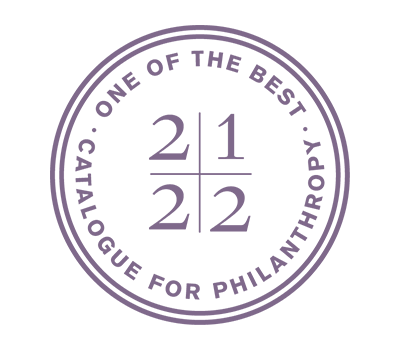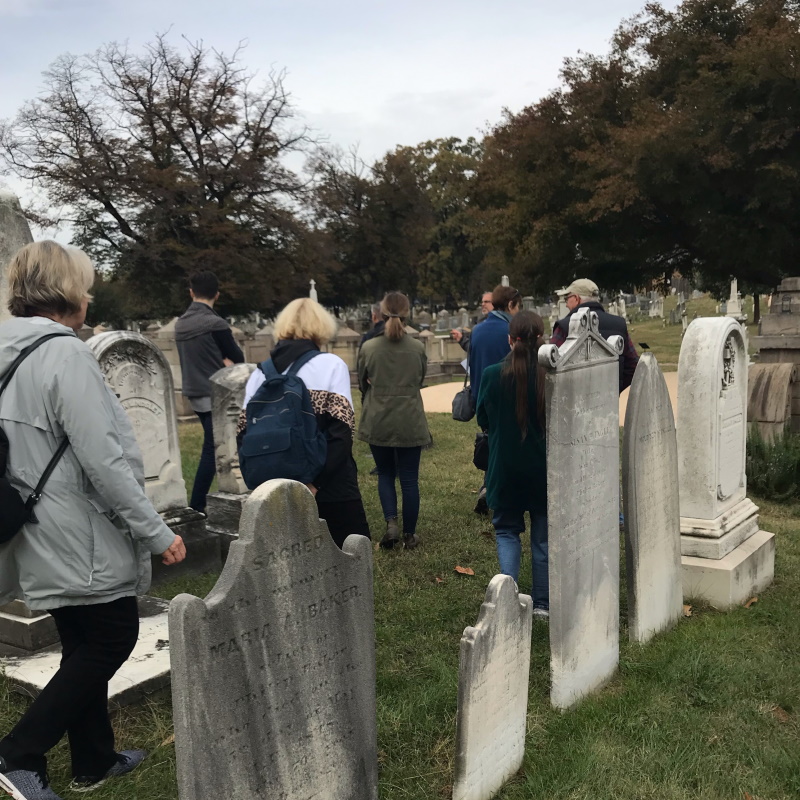 On Friday, October 25th, 2019, the United States Capitol Historical Society (USCHS) conducted its annual tour of Congressional Cemetery. Chief Historian William diGiacomantonio led more than 20 people through the hallowed and historic grounds to explore the artistic symbolism of cemetery art.
On Friday, October 25th, 2019, the United States Capitol Historical Society (USCHS) conducted its annual tour of Congressional Cemetery. Chief Historian William diGiacomantonio led more than 20 people through the hallowed and historic grounds to explore the artistic symbolism of cemetery art.
With interments at Congressional Cemetery beginning in the first decade of the 19th Century and continuing to this day, the trends and changes seen in funerary art there mirror those in other parts of the United States. The earliest headstones were simple pieces, only noting names and vital dates of the deceased. Mr. diGiacomantonio pointed out that even such limited displays can provide a glimpse of the times; unique or unusual names can hint at popular culture and world events of their day.
Mr. diGiacomantonio explained that towards the latter half of the 19th Century, headstones grew more ornate and decorative, often featuring widely-known symbols. While allowing for subjective meanings and interpretations, “reading” funereal art can point to some compelling themes and messages: torches might represent the abiding spirit of life (if upright) or life hereafter (if inverted); covered urns represent the veil drawn between heaven and earth; broken chains represented the Christian belief in the liberation from death; a broken column or tree trunk represents life cut short; and cloaks often represented a man’s public life, to name several motifs.
In the 20th Century, headstones and markers became more personalized. Mr. diGiacomantonio highlighted instances in which specific symbols were used to symbolize the important chapters of the life of the deceased (e.g. military insignia to reflect service in a particular unit or branch). Memorial benches, though not an innovation of the 20th Century, were seen more frequently.
In the 21st Century, the trend of personalization continued to a larger extent. Such personalized symbols actually represent a conscious rejection of mere symbolism, in order to reflect more directly the personality of the deceased—either in form (shape, design, material), or function. For example, benches (“exedra”) and even picnic tables harken back to funeral traditions of partying among the ancient Greeks. Mr. diGiacomantonio shared some other recent favorites: a young missionary is memorialized with a bench rough-hewn from a large block of granite; a musician is marked with an accordion-shaped headstone; another headstone is a cube stood on one of its corners; and a librarian has arranged his headstone to read as a card catalog entry (always a favorite for bibliophiles). Well-known stops along the way included the sites for USMC bandleader and composer John Philip Sousa; the Holocaust survivor and former U.S. Rep. Tom Lantos; and the recently interred Cokie Roberts near the cenotaphs of her father, Rep. Hale Boggs, and his colleague, Speaker “Tip” O’Neill.
This tour was offered as one of the many benefits of USCHS Membership.
